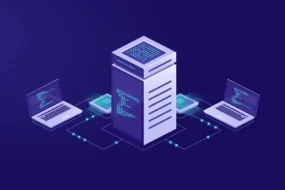To strategically protect your Melbourne business in the current digital age, it is crucial to create an IT strategy that ensures the protection of your data, systems, and processes. An effective IT strategy can not only mitigate risks and streamline operations but also align technology goals with your business objectives, enabling you to stay competitive in your market.
Protecting the Business

An IT strategy helps protect a business by identifying potential risks and vulnerabilities that may arise from cyber-attacks, data breaches, and system failures. By having a well-defined IT strategy, a business can create effective measures that help prevent and mitigate such risks. A comprehensive IT strategy includes data backup and recovery plans, cybersecurity measures, and disaster recovery plans to ensure the business’s protection against potential threats.
Setting Up for Success
Creating an IT strategy also helps set a business up for success by streamlining its operations and improving productivity. An effective IT strategy aligns the business’s technology goals with its overall business objectives and enables the company to optimize its resources and infrastructure. A well-designed IT strategy helps businesses innovate and stay competitive in their respective markets.
Implementing Robust Cybersecurity Measures

Cybersecurity is a significant concern for businesses of all sizes. A well-crafted IT strategy allows organizations to prioritize cybersecurity measures and allocate resources accordingly. It ensures that robust security protocols, such as firewalls, intrusion detection systems, and encryption, are in place to safeguard critical data from unauthorized access, data breaches, and cyber-attacks. Investing in comprehensive cybersecurity services from reputable providers like Proactive Technology Partners can further enhance the strategically protect your Melbourne business.
Optimization of Resources and Infrastructure
Optimization of resources and infrastructure is an essential component of a successful IT strategy. By aligning technology goals with overall business objectives, businesses can optimize their resources to increase efficiency, and productivity, and reduce costs. This may involve adopting new technologies, consolidating hardware and software systems, implementing cloud-based solutions, and leveraging data analytics to inform decision-making.
Enabling Scalability and Growth

An effective IT strategy not only focuses on mitigating risks but also positions a business for long-term success. By leveraging technology effectively, businesses can streamline their operations, improve productivity, and enhance customer experiences. Moreover, a well-planned IT strategy accounts for scalability, enabling businesses to adapt and expand their IT infrastructure as they grow, ensuring they have the necessary technological capabilities to support their future needs.
Effective measures to prevent and mitigate such risks
Effective measures to prevent and mitigate risks are critical components of a well-designed IT strategy. These measures can include implementing cybersecurity protocols, regularly updating software and hardware, backing up data to off-site locations, and educating employees about secure behaviors. By adopting these measures, businesses can reduce the likelihood of a security breach and minimize its potential impact on their operations.
Frequently Asked Questions
What Is the Importance of Creating an IT Strategy for Small Businesses?
Creating an IT strategy is equally important for small businesses as it is for large businesses. Small businesses are often more vulnerable to cyber-attacks and data breaches due to the lack of resources and expertise in the area. An IT strategy helps small businesses protect their data, systems, and processes, and align their technology goals with their overall business objectives.
What Role Does Compliance Play in IT Strategy?
Compliance with data protection and privacy regulations is essential for businesses, particularly in industries like healthcare, finance, and legal sectors. An IT strategy helps implement necessary controls, policies, and procedures to ensure compliance, maintain data integrity, protect customer information, and avoid legal repercussions.
How Often Should an IT Strategy Be Updated?
An IT strategy should be updated regularly, ideally every year or two, to keep up with the rapidly changing technology landscape. As new threats and opportunities arise, businesses need to re-evaluate their IT strategies to ensure that they are up-to-date and aligned with their business objectives. Regular updates also help businesses identify potential gaps and weaknesses in their existing IT strategies and create new plans to mitigate them.
Conclusion
creating an IT strategy is crucial for businesses to thrive in today’s digital age. An effective IT strategy not only protects a business from potential cyber threats but also streamlines operations, improves productivity, and aligns technology goals with business objectives.
By investing in a comprehensive IT strategy, businesses can optimize their resources, innovate, and stay competitive in their respective markets. Ultimately, an IT strategy sets a business up for success by enabling it to adapt to the rapidly changing technological landscape and leverage new opportunities for growth.










